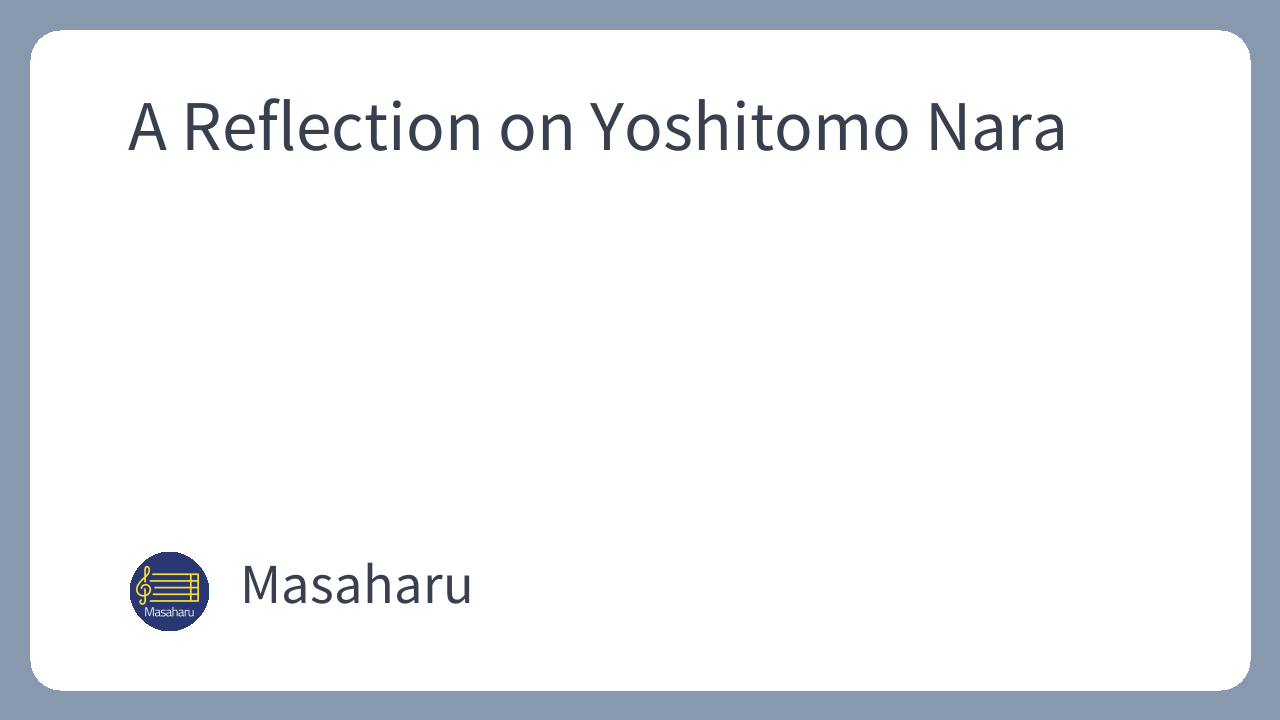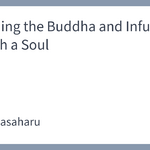(Originally posted: June 26, 2006)
On June 25, 2006, I watched the documentary program Jounetsu Tairiku. The featured guest was the artist Yoshitomo Nara.
I had always felt that his paintings of girls—those seemingly childlike eyes filled with a weight of adult emotion—left a strong impression. As I learned more from the program about his emotional solitude during his years abroad and his current daily life, I found myself arriving at thoughts and realizations I hadn’t reached before. I’d like to take a moment to put some of those into words.
Those eyes in the paintings, I wonder if they form a closed circuit with the inner world of the artist himself. The gaze, the act of being gazed upon—the artist and the girl. The simple urge that leads him to say, “I draw because I want to.” What lies at the root of that desire? A kind of longing, even fear. It’s those forces, I feel, that give momentum to the circuit.
Within Nara’s solitude—his “room of creation”—his works seem to spin off from the very momentum of that circular force, almost as though the circle itself births them.
He once said, “If I tried to wrap everything up from the start, I could—but that wouldn’t be interesting.” He embraces the trial-and-error process head-on, fully experiencing it. And it is through this journey that the figure of the girl becomes imprinted—a moment crystallized.
When we find ourselves captured by the girl’s gaze, perhaps we are listening to her recount her memories of time shared with the artist. I imagine that what transpired during that time was a delicate push-and-pull of the heart—something that could only occur upon the canvas of a child’s innocence, where earnestness and cruelty exist side by side.
At the same time, I came to understand that the shift in the expressions of his girls in recent years reflects, quite symbolically, the inevitable changes in his communication with the outside world.
Where once their eyes confronted the viewer with raw fear, frustration, sharp-edged emotions—at times almost aggressively pushing us back, refusing deeper engagement—now there’s a calmness, a quiet sense of waiting.
This “air of waiting,” I believe, signals that the artist’s sense of the Other has begun to carry a different hue. Perhaps the circle’s outer edge is beginning to blur, to seep outward.
As Nara himself poignantly shared, “I didn’t choose to be a painter as a profession—it’s how I chose to live.” In that light, the evolving gaze of the girls seems to stand as a symbolic reflection of Nara the person, and his transformation.
“What I couldn’t paint before, I can paint now.
What I could paint back then, I can’t anymore.”
These quietly spoken words conveyed to me both the fragility and thrill of being a living, breathing creator—and I couldn’t help but feel joy in hearing them. It was my own kind of joy in recognizing someone embodying the strength of “there is no other way for me to be.”


